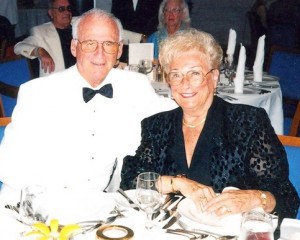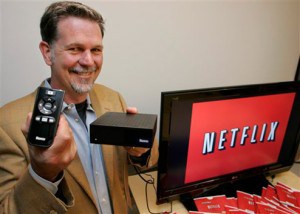A Boynton Beach family’s tragic story may give Comcast phone customers second thoughts about whether the cable company’s “digital phone” service is a help or hindrance in an emergency.
Seymour Reiner arrived home last Thanksgiving to find his wife of 62 years dead on the floor from a cut ankle. But his shock turned to anger when he learned his beloved wife Sidell’s death likely came after Comcast, the company that delivers his phone service, could not quickly manage to provide emergency officials with their home address.
Comcast customers in south Florida who dial “0” from their Comcast phone lines hear a message indicating they should press “0” if the call is a 911 emergency, which Sidell apparently did at least 10 times.
“Help me! Help me, please! Help me! Help me!” Sidell pleaded in disturbing recordings (warning: graphic content) obtained by the Sun Sentinel newspaper.
Sixteen minutes later, when paramedics finally arrived, it was too late. An hour after that, Seymour arrived home to find the phone laying next to Sidell’s body.
The 81-year old Florida grandmother cut her ankle after dropping some crystal glassware, hitting an artery that caused major bleeding. She reached for her phone and dialed “0” hoping to reach an operator, but was instead connected with Comcast’s call center. The cable company eventually transferred the call to Palm Beach County’s 911 emergency services center, but by that time, her anguished pleas for help were barely audible.
The county’s 911 dispatcher asked Comcast’s operator for Reiner’s address, which she could not provide. Minutes passed as Comcast tried to figure out the address where the call originated from, and an ambulance was eventually dispatched. Emergency responders arriving at the Sidell’s home left after nobody answered their knocks on the home’s locked front door. Sidell was unconscious by that time.
 Now the Reiner family has filed a lawsuit against Comcast demanding unspecified damages for the cable company’s performance during the tragic events, and also has served notice they may sue the county and fire rescue service for their alleged negligence.
Now the Reiner family has filed a lawsuit against Comcast demanding unspecified damages for the cable company’s performance during the tragic events, and also has served notice they may sue the county and fire rescue service for their alleged negligence.
Reiner appeared visibly upset at a press conference held earlier today announcing the lawsuit. He told several reporters he doesn’t want anyone else to suffer the tragedy he faced when his phone provider couldn’t quickly handle a call for help that ultimately resulted in his wife’s death.
 Gary Cohen, the family’s attorney, was livid about Comcast.
Gary Cohen, the family’s attorney, was livid about Comcast.
“They have her address when it comes to a bill, but when it comes to saving her life, they can’t find her address?” Cohen asked.
The lawsuit led the news across several cities in south Florida, and viewers heard the story first-hand:
“Her phone number, when we put in her phone number, it is showing that there is no information available on that number,” the Comcast operator says.
“Oh, goodness,” the Boynton Beach operator responds.
Cohen accused Comcast of being indifferent about the urgency of Reiner’s desperate pleas for help and said the cable company dropped the ball.
“This was a life-deciding call and there doesn’t seem to be a lot of communication that this is a desperate situation,” Cohen said. “”Nobody took responsibility in saving her — no one went that extra mile and did what they needed to do.”
Cable company and other “Voice Over IP” phone services have been criticized in the past for not passing through important caller-ID information to emergency responders that includes up to date addresses of where the calls originate. Some traditional phone companies have used past failures by alternative providers to warn consumers not to disconnect landline service because of possible delays in emergency response. The Reiner family may prove to be a case in point.
Comcast spokeswoman Marta Casas-Celaya said her company does not comment about pending court cases and declined to answer general questions about services provided when a caller dials “0.” Another statement indicated the company felt “deeply saddened for the Reiner family’s loss.”
[flv width=”640″ height=”500″]http://www.phillipdampier.com/video/Boynton Beach Tragedy 10-27-10.flv[/flv]
Several Florida TV stations gave this story the lead on their evening newscasts. [WPBF-TV & WPTV-TV West Palm Beach, WFOR-TV Miami, WPEC-TV West Palm Beach] (9 minutes)


 Subscribe
Subscribe






